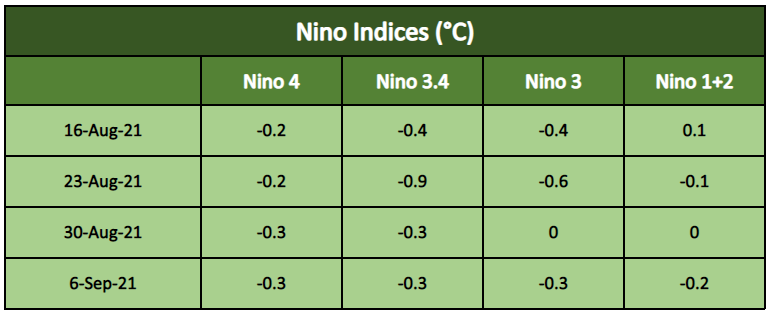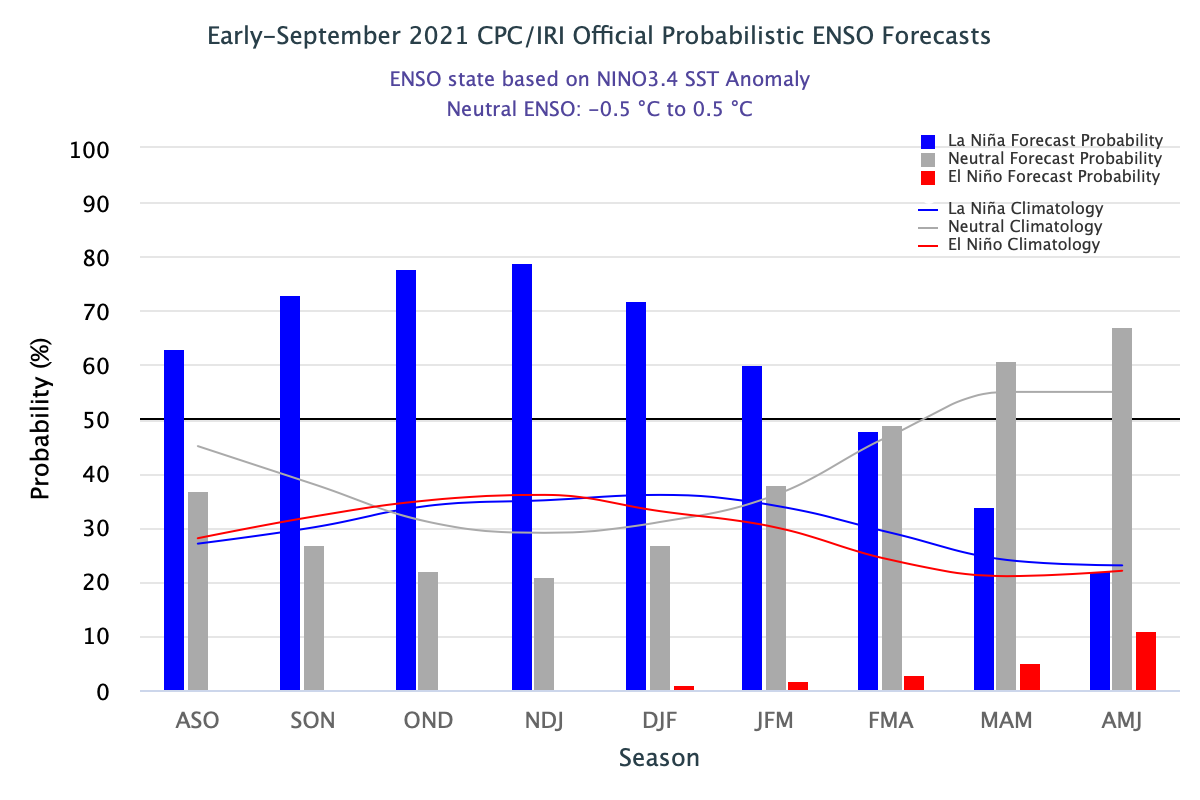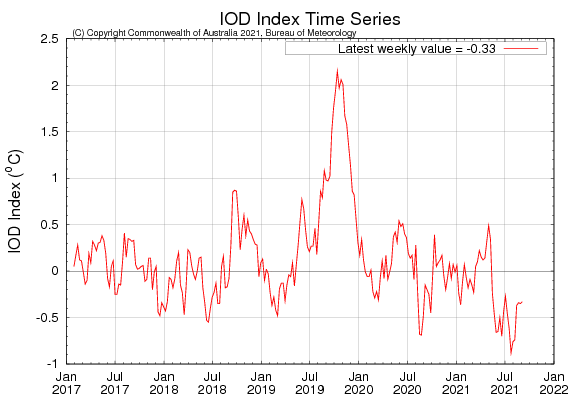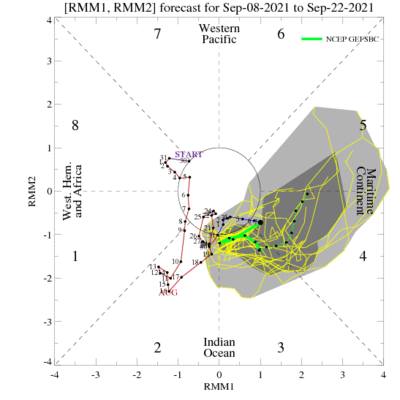
East and Central Pacific Ocean host 4 Nino indices to gauge the degree of El Nino, La Nina, and Neutral conditions. However, the Oceanic Nino Index (ONI) is based on sea surface temperature (SST) in the Nino 3.4 region. This index is the principal measure for monitoring, assessing and predicting ENSO. It is one index that helps to place current events into a historical perspective. All the 4 indices during this week had turned -ve, indicating persistent cooling in the area of interest.
ENSO: ENSO neutral conditions are present. Equatorial SST’s are near to below average across most of the Pacific Ocean. ENSO neutral is likely for September with the possibility of La Nina emerging during post-monsoon. It is expected to last through the 2021-22 winters. After the monsoon season concludes, this will have a bearing on the upcoming seasons.

Nino Indices projection for the next 6 months suggests Pacific cooling to continue. Historically speaking, El Nino/ La Nina events tend to develop during April-June and typically last for 9-12 months. These also have a tendency to peak between October-February.

IOD: Indian Ocean Dipole (IOD) was consistently -ve and below the threshold mark of -0.4°C, from mid-July to mid-August. The transition started thereafter and this oceanic index got into a spiralling pattern. Now, this important parameter has firmly parked itself within the threshold zone of +/- 0.4°C. The latest weekly value of the index to 05th Sep was -0.33°C. It is expected to shift marginally towards 0°C during Sep/Oct.

MJO: Intraseasonal variability in the atmosphere, which is often related to the Madden-Julian Oscillation, can significantly impact the surface and sub-surface conditions over the ocean. It is expected to stay within the bounds of the Indian Ocean for the next few days before exiting to the maritime continent. MJO is in an ideal position to enhance monsoon activity over the Bay of Bengal and accentuate rainfall during the last leg of the season.

The month of September has witnessed good rains over most parts, including those facing near-drought conditions like Gujarat, Rajasthan and Odisha. Low pressure has formed over the Bay of Bengal and may intensify further. September might as well end up as the rainiest month of Monsoon 2021.


